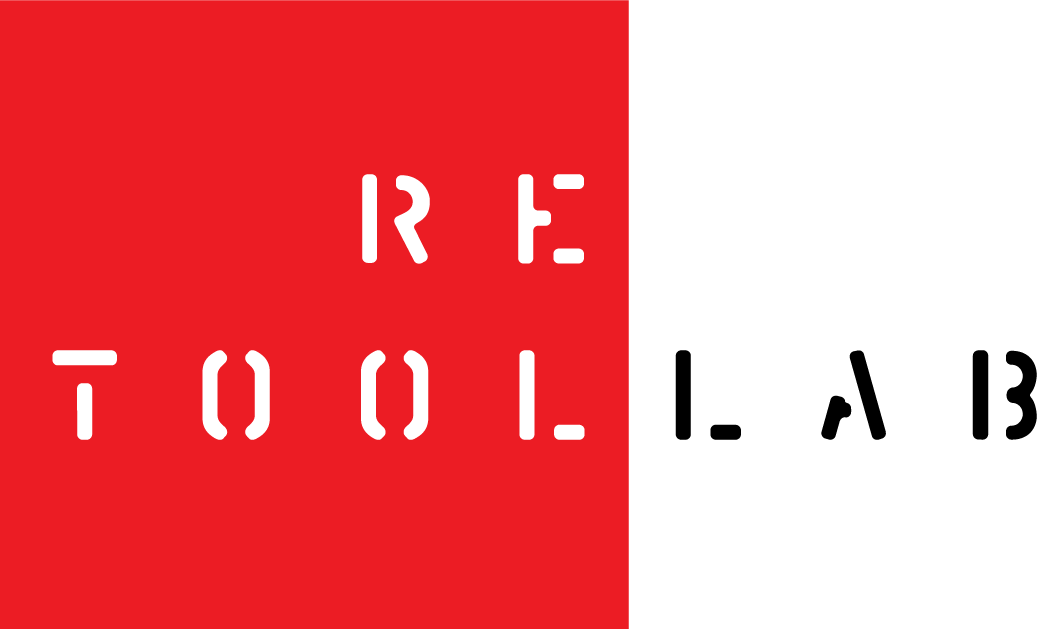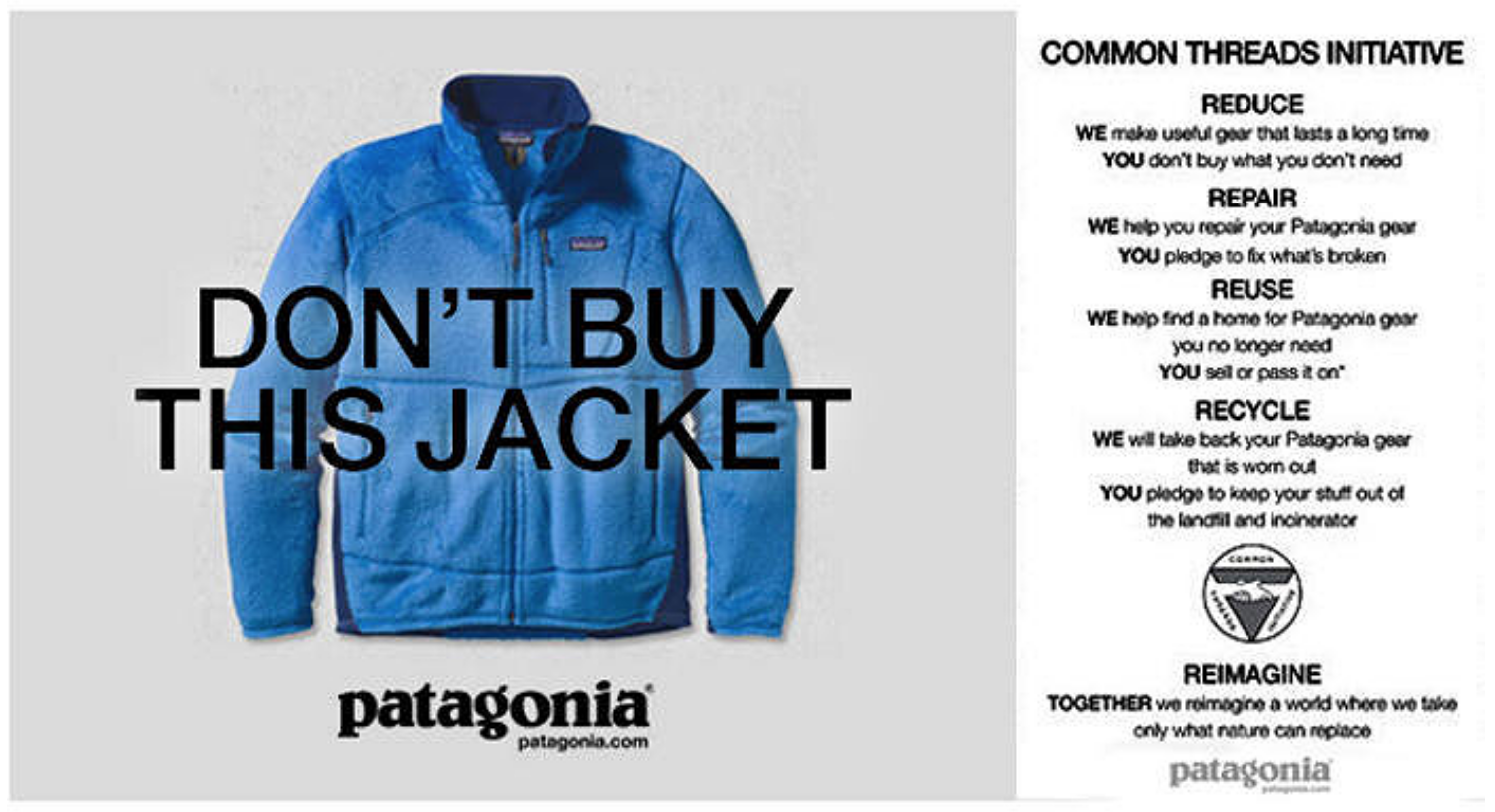Leadership branding, Patagonia-style.
In the rush to rebrand there are companies that choose to pass-over questions like “Are our values important?” because they’re not sure anyone cares. But a company like Patagonia has made answering those questions the focal point of everything they do. It has a very important contract with its customers who expect Patagonia’s anti-consumerist message to protect them and the environment in equal measure. Do you really need to buy their product? Will you repair it before throwing it out? Who challenges customers by asking questions like that? A leader who is very sure of its brand.
You’re rebranding: you want to establish your company as well differentiated and authentic, and to say you’re a leader. So you start asking questions like “Who are we?” “What are our values? Are they important?” “What do we stand for?” “What do we believe in?” Does anyone care about our mission? Crucial questions – and if you want some answers you can learn a lot from Patagonia.
It’s a nice, quality product – so well-made, in fact, Patagonia is considered the Gucci of outdoor apparel. Perhaps that isn’t the brand identity Yvon Chouinard intended in 1973: building the best products may be one part of the mission he gave his fledgling company, but if Chouinard’s creation has, amidst withering competition, grown into one of the world’s most influential apparel brands – with 1,350 employees and $540 million in annual revenue – its because its operations are guided by a clearly-articulated higher purpose.
Chouinard launched Patagonia to address the damage he and other climbers were doing to the rock faces they were climbing; environmental problems remains central to the Patagonia mission. Forty-five years later, its environmental leadership has taken Patagonia to a unique place among companies and proved you can do well by doing good.
The company’s mission has evolved a very distinctive contract with customers. From the company’s perspective, being a responsible leader means knowing how to reduce its environmental impact. For example, knowing it takes 185 gallons of water to grow enough cotton to make a t-shirt, and knowing that where the water comes from makes a difference: a dam displaces people and destroys rivers. Chouinard wants the raw materials for Patagonia products to come from where it rains so the impact is minimal. On the other hand, Chouinard wants customers to think twice before buying anything: do you really need it? He wants people to feel like that jacket is something they’re going to have the rest of their lives; if it does wear out, he wants people to repair – not replace – it. “We want to close that loop between consuming and discarding,” so Patagonia produces a series of videos showing customers how to fix things themselves – or send it back to the company. It’s first initiative repaired more than 30,000 items in 18 months.
That spawned a project dubbed Worn Wear, which began accepting repaired Patagonia merchandise for sale in stores. The lesson-learned is that the more Patagonia campaigns on an anti-consumerist message, the more it invests in its values, the better the company performs. When Chouinard told people not to buy Patagonia jackets, more people bought jackets. When employees proposed that the company give away all of its 2016 Black Friday sales to grassroots environmental organizations, the company raised $10 million and signed up 24,000 new customers on that one day. Says Chouinard, “every time I have made a decision that is best for the planet, I have made money.”
Living up to a meaningful mission statement pays off. It turns out that the more honest and open Patagonia is the more its customers want to engage with its efforts to be a better global citizen. Its customers want to do the right thing and make their own environmental commitment, they just need a leader to help show them the way. They want to associate with and support brands that do the right thing. Patagonia does that.
Not surprisingly, Chouinard knows he has to pass on his values to employees if they are to carry the torch and extend Patagonia’s leadership. Mission statement and values give people insights so they can follow the founder’s vision, and make the right strategic decisions. He used to run five-day courses with 15 employees at a time, and would talk about why Patagonia does things the way it does, but it got too time-consuming as the company grew.
So he authored a book for employees entitled Let My People Go Surfing. It’s about the history of the company and its philosophy; people get a copy when they start working at Patagonia.
And those values do get passed along. Rose Marcario, Patagonia’s current CEO, has not been shy in using the company’s bully pulpit to protest recent government decisions. She worries that Trump is disrupting the planet’s future by pledging to bring back coal, dismantle public land protections, and unwind efforts to combat climate change. This represents everything Patagonia believes in. Marcario feels all the company stands for is “on the line” and says this was is moment to embrace Patagonia’s core DNA. Rather than be silent and compliant, the company has upped its commitment to environmental activism and resolved to use its own capital and influence to achieve what government won’t. She wants to “galvanize” the Patagonia community around these issues, she says, reminding her people that they must “continue to [use] their voice” and “deepen our resolve to protect what we love.”
This is the Patagonia mission at work. How many companies get personally involved to this extent? Very few. To Patagonia it is all about having the willingness to live its brand. Marcario has little patience for leaders who act out of self-interest and she pushes those around her to work on a “30-year framework,” to understand the long-range consequences of business decisions, rather than merely what will move the needle next month or next year.
This concept of inspiring others to act differently is an essential part of Patagonia’s mission. “At the end of the day,” Marcario says, “it’s the customers who will change the world” and she wants customers to buy into causes at the same time they’re buying products.
Most companies have mission and values statements – Patagonia lives its mission statement everyday and tells its story to bring others into its community. This is leadership branding, Patagonia style.
What is your company’s greater purpose? How do you inspire and empower employees to live your company’s mission and values? What can you do today to have a leadership brand? The answers to these questions are neither as difficult nor as elusive as you might think. As Patagonia’s Marcario suggests, the answers start with willingness. Leadership Branding, Patagonia-style.



